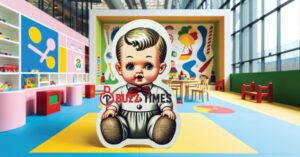Introduction to Kewpie Doll
Kewpie Doll, originating in the early 20th century, have charmed generations with their distinctive features and enduring appeal. These dolls, transcending their role as mere toys, have become cultural icons.
The Birth of the Kewpie
Rose O’Neill, an American illustrator, introduced Kewpie characters in her comics in 1909. Their popularity led to the creation of the Kewpie Doll in 1912, marking a significant moment in the world of toys and collectibles.
Design and Production
The initial design of Kewpie Dolls featured side-glancing eyes, cupid’s bow lips, and a tuft of hair. Artisans used various materials over the years, adapting to changing times while maintaining the dolls’ unique characteristics.
Evolution Over the Decades
Kewpie Dolls have undergone numerous transformations, reflecting changes in manufacturing techniques and materials. Despite these changes, they have retained their fundamental charm.

Cultural and Artistic Influence
Kewpie Dolls have made notable appearances in art, literature, and media. They symbolize innocence and nostalgia, influencing various aspects of popular culture.
Global Reach of Kewpie Doll
The dolls have gained a worldwide following, with different cultures adopting and interpreting them in unique ways. This global appeal underscores the universal nature of their charm.
The Collector’s World
Kewpie Dolls are not just toys but prized collectibles. Collectors value them for their historical significance, artistic design, and emotional connection.
Care and Preservation
Maintaining Kewpie Dolls involves careful preservation techniques. Collectors and enthusiasts prioritize their upkeep to ensure their longevity and legacy.
Kewpie Doll Today
In the digital era, Kewpie Dolls have found new life online. Auction sites, collector forums, and social media platforms have created vibrant communities of enthusiasts.
Conclusion
The Kewpie Doll stands as a testament to the enduring appeal of well-crafted toys. Its journey from a comic strip character to a beloved collectible reflects its significance in the cultural and artistic landscape.

